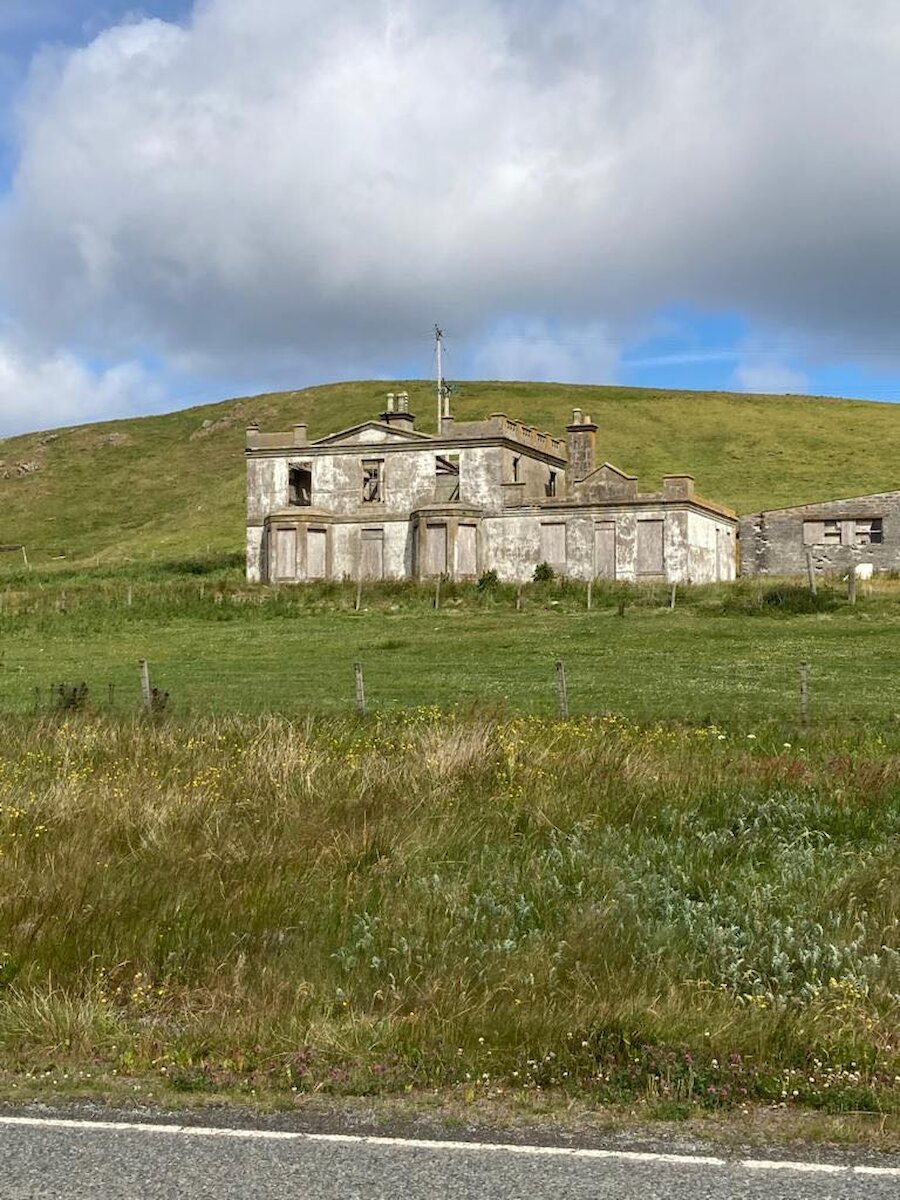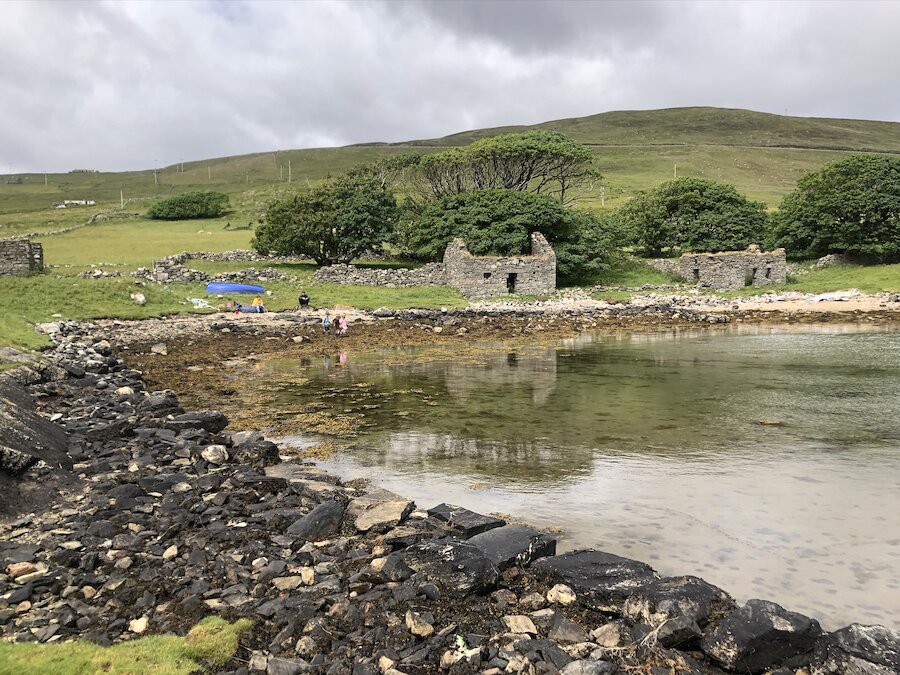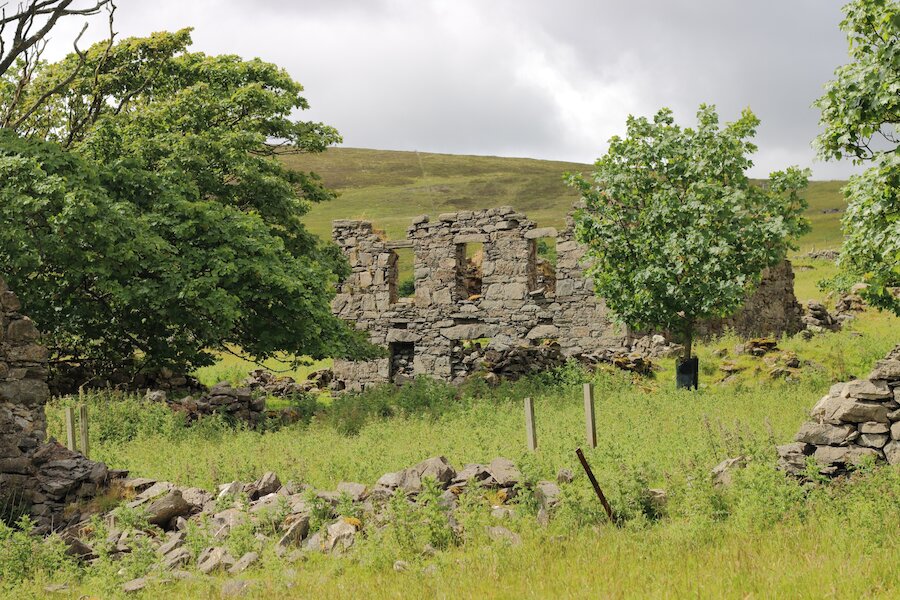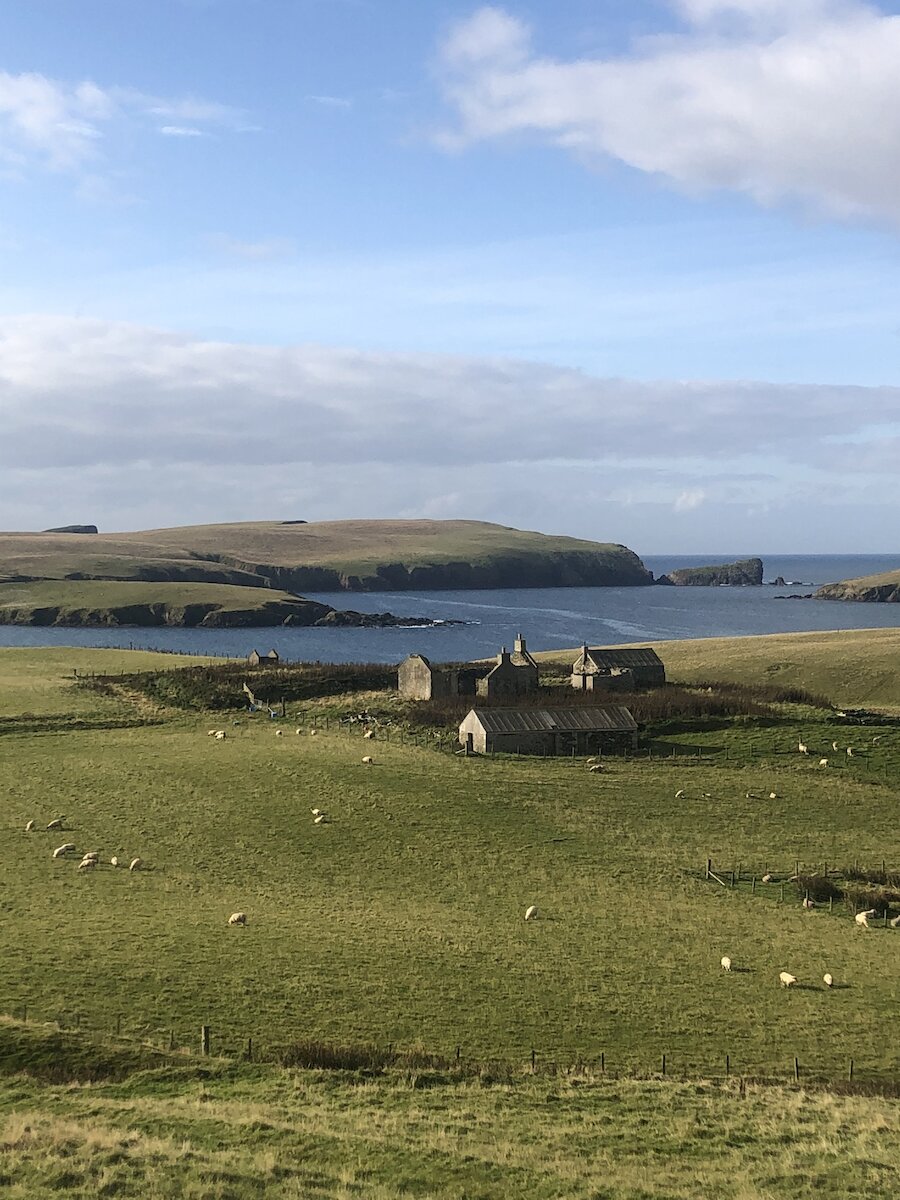I’ve included the little house at Clavel, just a few miles south of Bigton in Shetland’s South Mainland, for a couple of reasons. Not only is it picture-perfect, standing on a rise in the landscape amongst rich-green pasture, but it has also been used as a filming location for the popular Shetland tv series. The house was the site of one of the shootings in the hit series featuring Detective Inspector Jimmy Perez.
Clavel in most respects is typical of the type of building you will find abandoned in Shetland, and it’s something that I’m asked about a lot: ‘why are there so many abandoned houses’. The reasons for this are complex but, in simple terms, the occupants moved on at some stage in history, and the buildings were left, as they stood.
Clavel and other houses like this that you see in the landscape are traditional but-an’-ben houses; single-storey, two-room houses with adjacent byre and barn. They were traditional in Shetland right into the 20th century and are stylistically similar to the Viking or Norse longhouses that came with the arrival of the Vikings from the 9th century.
Most of these croft houses have been abandoned as new homes were built; larger, modern spaces with insulation, piped-water and the room to accommodate growing families. After this, the old family homes were left disused – becoming shrine-like, as the only tangible thing remaining from the long-forgotten faces of a family tree. These homes were small and compact, built onto the very hill that they stood, with neither foundation nor any concept that one day, the inhabitants might want a bathroom, a home office or a utility room. By nature, they were damp, drafty and crowded, yet they evoke nostalgia as immeasurable as the passing of time through their walls.
Clavel was laterally the home of the late James Robert Sinclair who was born there in 1930. He lived there till 2007 when he moved into the fold of the community in Bigton. Watch a short video featuring James Robert Sinclair of Clavel by Shona Main.




